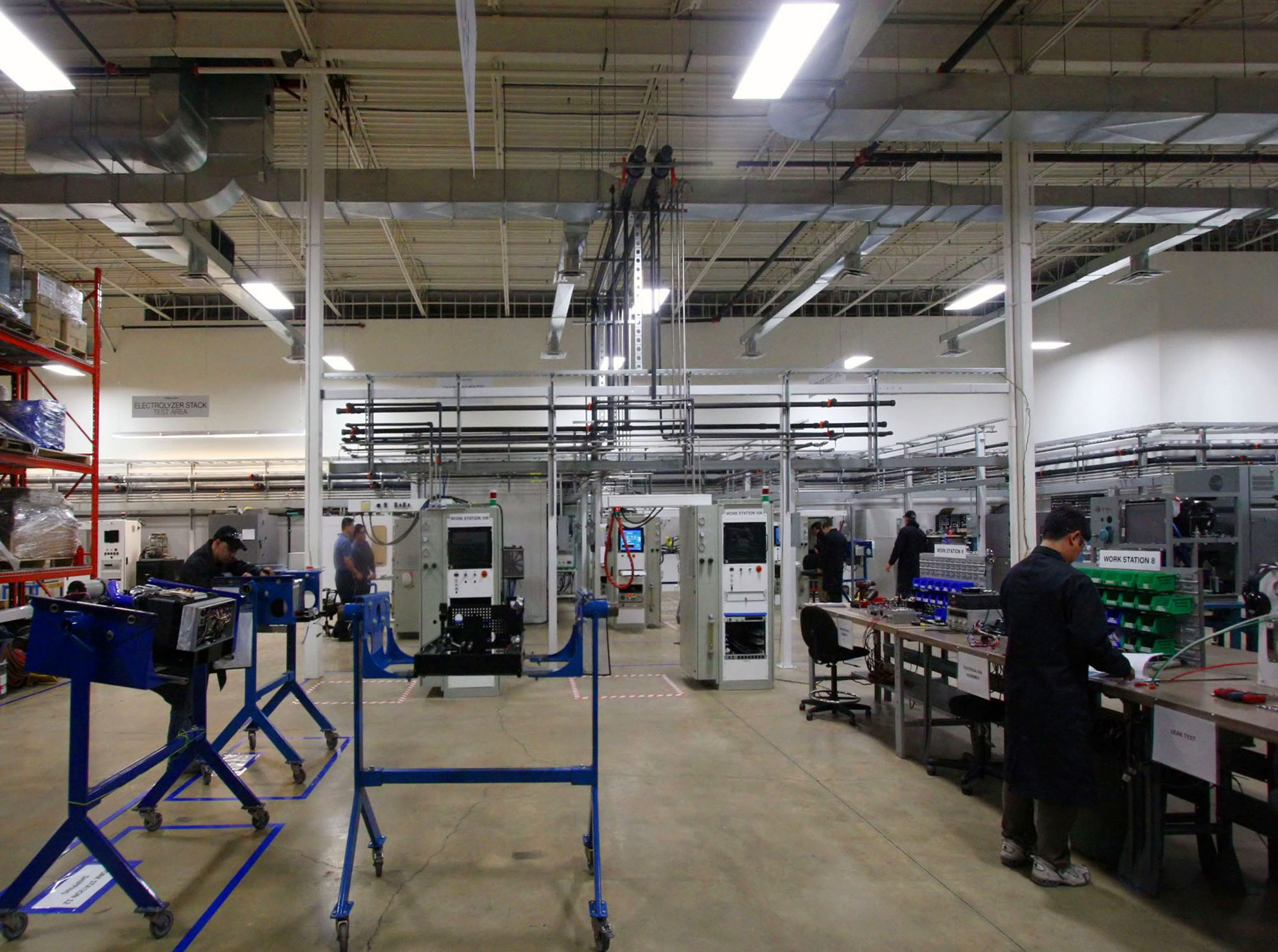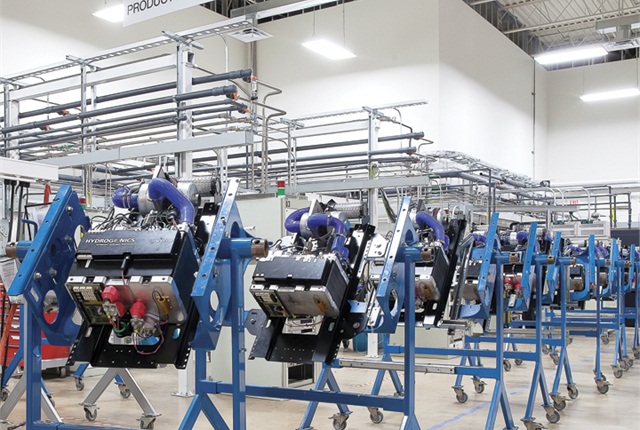If you have been waiting in vain for one of the last articles in this series to be published, I hope you will forgive me for the delay. I have been working with another type of zero-pollution ‘means of transportation’, using free energy to boot. The summer went by far too fast: volunteering at a sailing school for persons with a physical or developmental disability, regardless of age or degree of disability – with specially designed and equipped small sailboats.
Now to the … last article:
“To understand hydrogen is to understand all of physics.” — Anonymous
How true that statement. —— Until computers enabled scientists and engineers to utilize the power of electronics to research that “simplest?” of all elements. For many years, Geoffrey Ballard had worked long and hard exploring energy storage devices. He received the world’s interest and admiration when he capped his R&D by showing his fuel cell electric bus to the world.
Although Ballard received much of the attention in the previous articles, other people and companies have been no less busy in bringing fuel cells to market, as we discovered in ’Hydrogen and Fuel Cell History’.
Hydrogen as an alternative fuel and Fuel Cell Evolution is alive and well.
Until recently, fuel cell stacks were mostly assembled by hand. As more transportation ‘devices’ (planes, trains, & automobiles), as well as ships and drones, use fuel cells, automatic assembly is coming into play. “Automated assembly saves time and costs and is essential for a broad market launch of fuel cell electric vehicles.”
Hydrogenics, which includes the work and market experience of Stuart Energy, can look back onto more than 50 years of dealing with H2 and related equipment. Hydrogenics now produces electrolyzers and test equipment for many industries using H2 as well as ‘Celerity’ fuel cell power-units.
Having visited the H2 experts in this part of Canada (Ontario) in 2005, I enquired if they were planning another event open to the public. To my surprise, Farheen Warsi, the Marketing Manager, invited me to the Annual General Meeting. When arriving, CEO Darrel Wilson greeted everyone as they arrived. Feeling more than a little out of place, I chatted with one person, who is trusting his investment in Hydrogenics, while also multiplying his dollars with Warren Buffet’s Berkshire Hathaway.
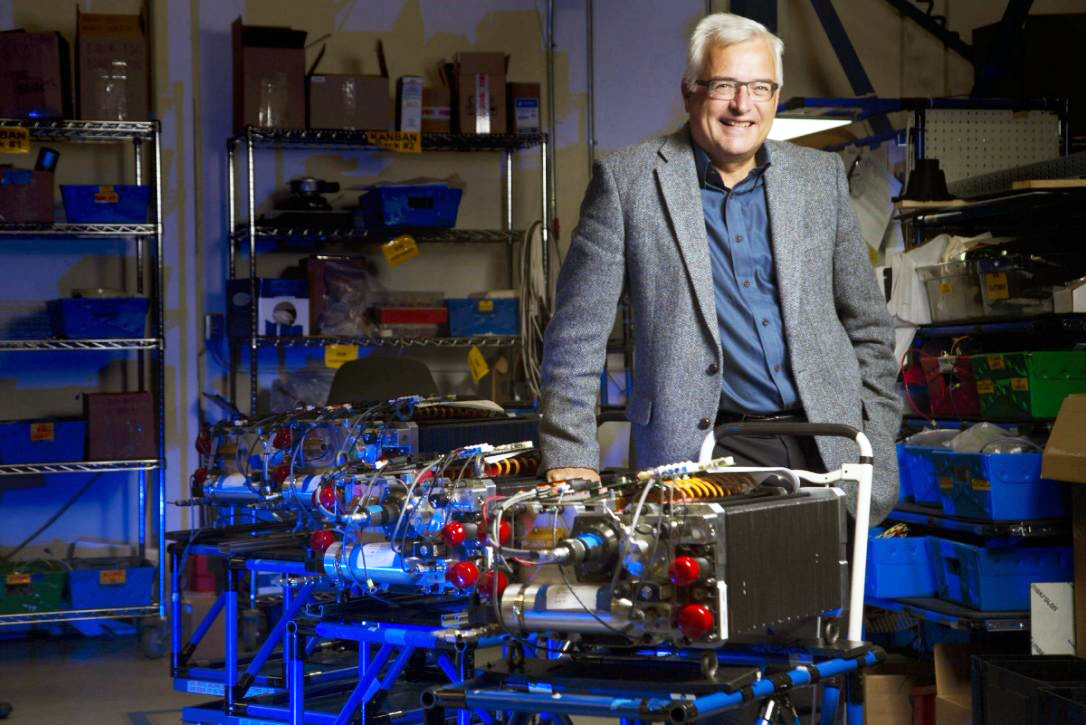 Hydrogenics CEO Darrel Wilson photo from Hydrogenics
Hydrogenics CEO Darrel Wilson photo from Hydrogenics
“Are we there yet?” was the rhetorical question Daryl Wilson asked at the opening of the AGM. He has been in charge since 2006, and he recounted the trials and tribulations of the past. After the formalities and detailing the company’s progress, he concluded, “We have arrived”.
Hydrogenics’ fuel cells have now ‘arrived’ in companies and vehicles around the world; in trains built in France, in planes made in Germany, in automobiles produced in China (buses) and in Norway by Scania, besides MAN another of the Volkswagen Group’s manufacturers of commercial vehicles.
Another new company, Nicola Motors, the “Tesla of Trucks” is planning to produce fuel cell trucks.
From another source: “The California Energy Commission (CEC) approved $2.6 million in grants to Hydrogenics USA Inc., for an advanced fuel-cell truck to transport shipping containers from ports in Los Angeles and Long Beach along a 150-mile loop to a rail network.”
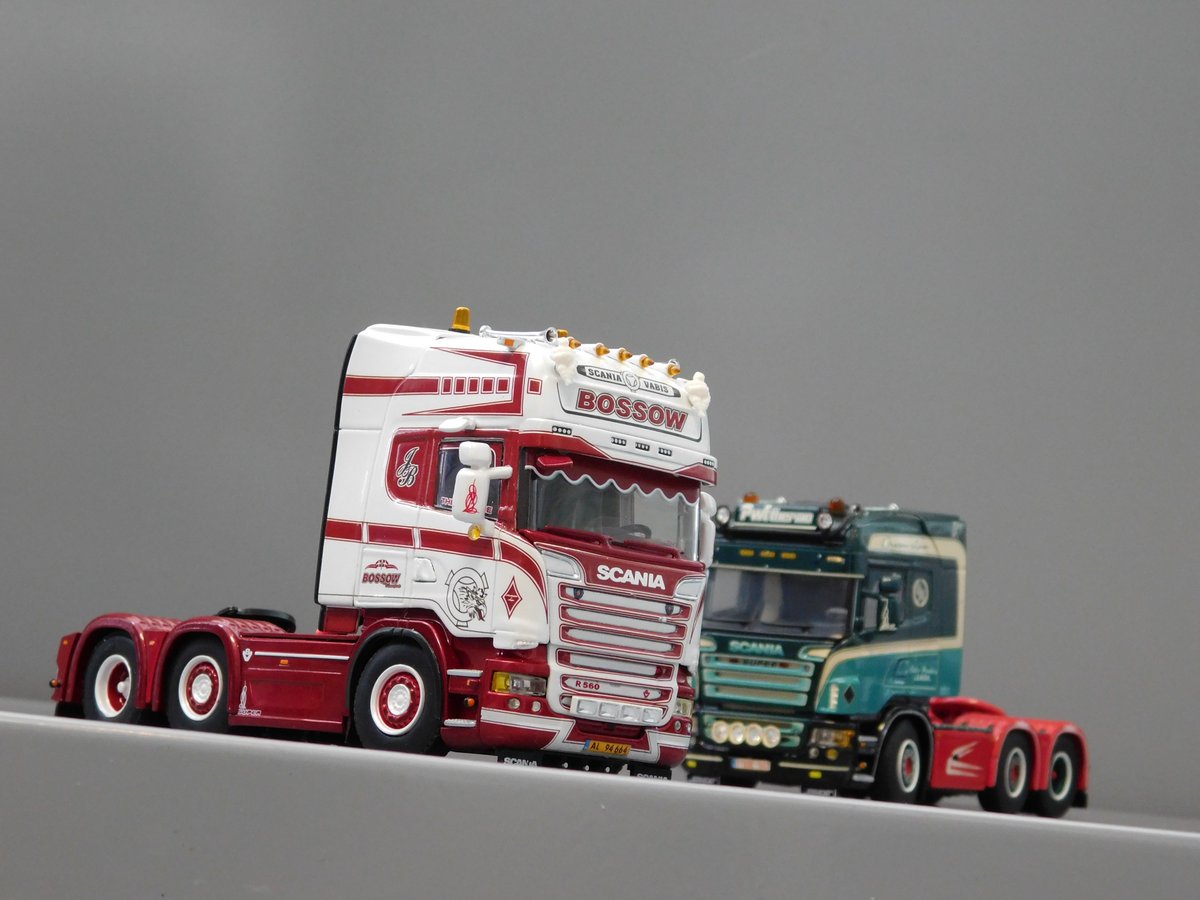 Volkswagen Group Scania trucks testing Hydrogenics fuel cells from Google
Volkswagen Group Scania trucks testing Hydrogenics fuel cells from Google
After the formalities of the AGM, Hydrogenics’ director of R&D, Nathan Joos, gave a tour of the production plant for a small number of interested persons. He asked me not to take photographs there, but offered to send me several, which he did. Visitors were encouraged to take pictures in all ‘open’ areas, and I have identified each one accordingly.
 FC units waiting to be connected in test cells to check for proper performance
FC units waiting to be connected in test cells to check for proper performance
—above 3 photos supplied to author by Hydrogenics
Because a picture is worth a thousand words, I let them tell the story. It is apparent that fuels cells are starting to be produced in increasingly large numbers – automated assembly by robots is beginning to be introduced even by small firms like Hydrogenics, according to Joos. Judging by the numbers mentioned in the links above, automation is required to fill those orders.
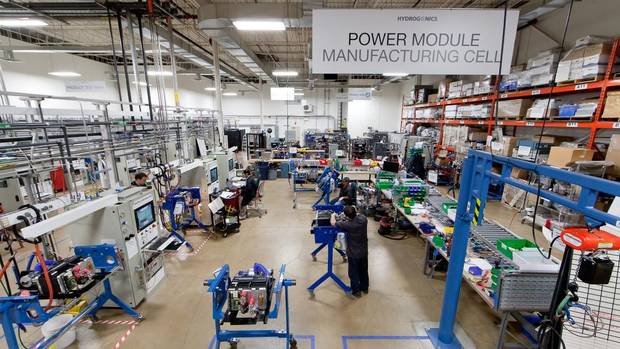 Another view this photo by Brenda Bow, Toronto Globe & Mail
Another view this photo by Brenda Bow, Toronto Globe & Mail
With larger orders coming in, at last, Hydrogenics has truly arrived among the ‘movers and shakers’ in the mobility and transportation industry. The research and development over many years, resulting in patents numbering in the hundreds, is starting to pay off. Some of these are displayed in the hallways, as my photo shows.
 Just a ‘snapshot’, not ‘Photoshopped’, as the changing illumination proves
Just a ‘snapshot’, not ‘Photoshopped’, as the changing illumination proves
All that intellectual property has now resulted in this:
As automakers begin to launch hydrogen fuel-cell vehicles, Hydrogenics’ new Celerity system promises medium- and heavy-duty truck fleets the opportunity to join the fuel-cell fray. The fuel cells can be used in various vehicles by simply bolting it into place and connecting it.
“Deployment of hydrogen vehicles is well underway worldwide, and the next few years are critical for the technology to gain momentum and develop into formidable competition for both internal combustion and battery electrics.”
 “We have arrived” picture taken in Hydrogenics’ hallway by the author
“We have arrived” picture taken in Hydrogenics’ hallway by the author
The Toronto company has already built 50 H2 fuelling stations globally and is in talks to install stations in Vancouver and in its hometown.
To recap everything we covered in this series of articles, I will give you a number of links and videos very soon – a short add-on.
If you liked the articles on H2 and FC history, perhaps I could be persuaded to write other stories in the future — that’s up to you, dear reader. Thanks for sticking with me.
Comments are closed here.


